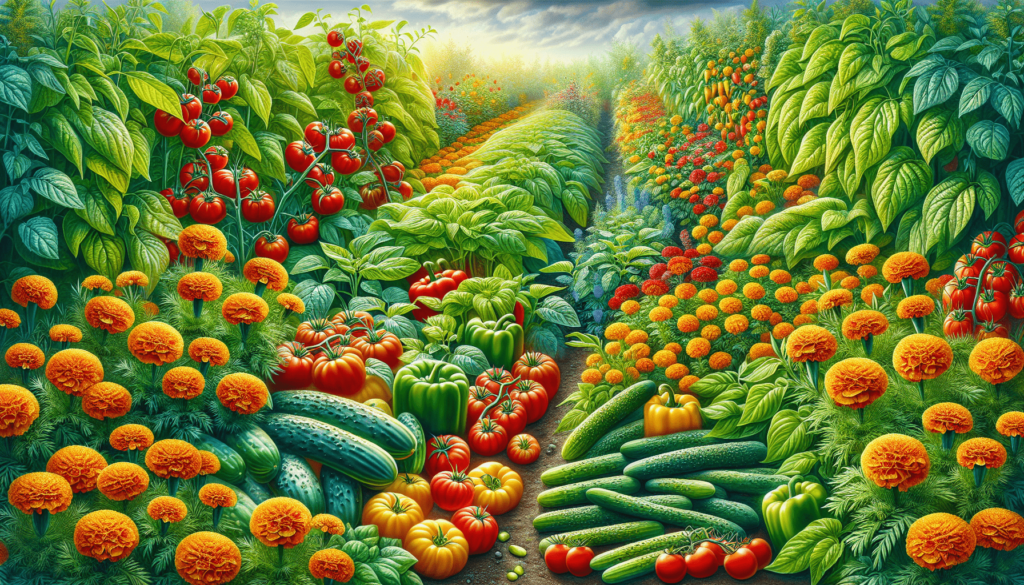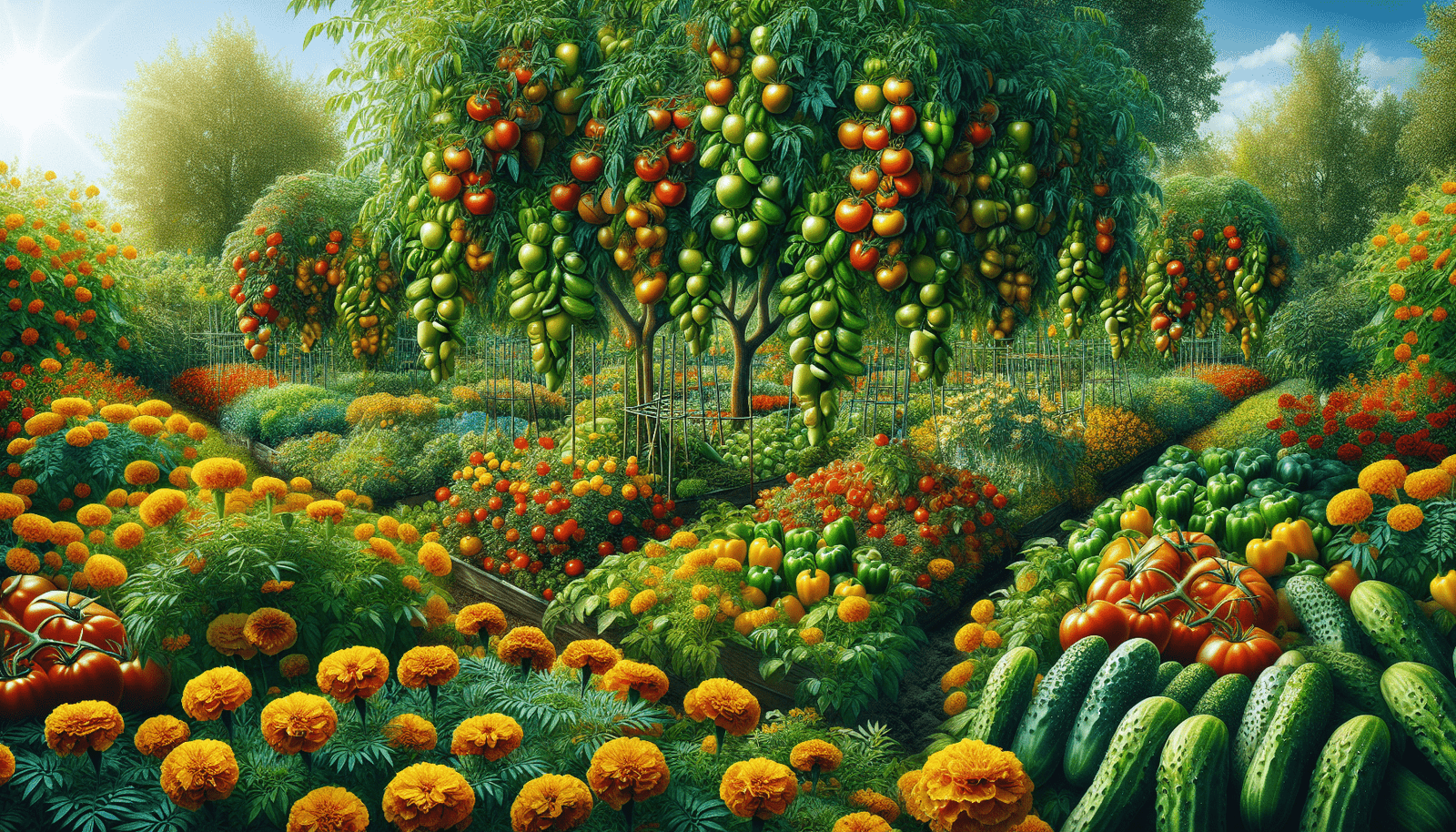Are you looking to increase your vegetable garden’s yield? Discover essential tips and tricks to maximize your garden’s potential!

Planning Your Garden Space
When starting your vegetable garden, it’s crucial to plan out your space efficiently. Consider factors like sunlight exposure, soil quality, and accessibility for watering and maintenance. By planning ahead, you can optimize your garden’s layout for maximum productivity.
Choosing the Right Location
Select a spot in your yard that receives at least 6-8 hours of sunlight daily. This will ensure that your vegetables get the necessary sunlight to grow and thrive. Additionally, choose a location with good drainage to prevent waterlogging, which can harm your plants.
Testing and Amending Soil
Before planting, test your soil to determine its pH level and nutrient content. This will help you identify any deficiencies that need to be addressed. Add organic matter like compost or fertilizer to improve soil quality and provide essential nutrients for your plants.
Selecting the Best Vegetables
Not all vegetables are created equal when it comes to yield. Choose high-yield varieties that are well-suited to your climate and growing conditions. By selecting the right vegetables, you can increase your garden’s productivity and enjoy a bountiful harvest.
High-Yield Vegetable Options
Some vegetables are known for their high-yield potential. Consider planting varieties like tomatoes, zucchini, peppers, and cucumbers, which are prolific producers. You can also opt for compact or dwarf varieties to maximize space and increase yield per square foot.
Companion Planting
Utilize companion planting techniques to maximize space and boost productivity in your vegetable garden. Pairing compatible plants together can help repel pests, attract pollinators, and improve overall plant health. Research companion planting strategies to create a harmonious and productive garden.

Proper Planting Techniques
To ensure a high-yield vegetable garden, it’s essential to follow proper planting techniques. From timing your planting to spacing your crops appropriately, these tips will set you up for success and help you achieve a bountiful harvest.
Timing Your Planting
Plant your vegetables at the appropriate time based on your local climate and growing season. Some vegetables thrive in cooler temperatures, while others prefer warmer conditions. Consult a planting calendar or guide to determine the best planting times for each crop.
Spacing Your Crops
Proper spacing is crucial for allowing your plants to grow and develop without overcrowding. Follow the spacing recommendations on seed packets or plant tags to ensure that each vegetable has enough room to thrive. Overcrowded plants can compete for resources and result in lower yields.
Watering and Fertilizing Guidelines
Watering and fertilizing are essential components of growing a high-yield vegetable garden. By providing your plants with adequate water and nutrients, you can promote healthy growth, prevent nutrient deficiencies, and increase overall productivity.
Watering Your Garden
Consistent watering is key to ensuring healthy and productive plants. Water your vegetables deeply and infrequently to encourage strong root development. Avoid overhead watering, which can promote disease, and consider using a drip irrigation system to conserve water and deliver moisture directly to the plants’ roots.
Fertilizing Your Plants
Regular fertilization is necessary to replenish nutrients in the soil and support plant growth. Use a balanced fertilizer or organic amendments to provide essential nutrients like nitrogen, phosphorus, and potassium. Follow the recommended application rates and schedule to avoid overfertilizing, which can harm your plants.
Pest and Disease Management
Pests and diseases can wreak havoc on your vegetable garden, leading to decreased yields and plant damage. Implementing proper pest and disease management strategies is essential for protecting your plants and ensuring a successful harvest.
Integrated Pest Management
Practice integrated pest management (IPM) techniques to control pests and reduce chemical use in your garden. Encourage beneficial insects, like ladybugs and lacewings, to prey on harmful pests naturally. Use physical barriers, like row covers, and organic pesticides as a last resort to manage pest infestations.
Disease Prevention
Prevent diseases by promoting good air circulation, reducing moisture on plant leaves, and practicing crop rotation. Remove infected plants promptly to prevent the spread of disease to healthy plants. Use disease-resistant varieties whenever possible to minimize the risk of plant infections.
Harvesting and Storage Tips
Harvesting your vegetables at the right time and storing them properly can help extend their shelf life and preserve their flavor and nutritional value. Follow these tips to ensure that you enjoy the fruits of your labor for weeks to come.
Harvesting Guidelines
Harvest your vegetables when they reach peak ripeness for the best flavor and texture. Use a sharp knife or pruners to avoid damaging the plant and cleanly cut the fruits or vegetables from the stem. Check the recommended harvest times for each crop to ensure that you pick them at the right stage of maturity.
Proper Storage Techniques
Store your harvested vegetables in a cool, dark, and dry place to extend their shelf life. Avoid washing vegetables before storage, as moisture can promote rotting. Use proper storage containers like breathable bags or containers with ventilation to prevent moisture buildup and maintain freshness.
Conclusion
Growing a high-yield vegetable garden requires careful planning, proper planting techniques, and diligent maintenance. By following these essential tips, you can increase your garden’s productivity, enjoy a bountiful harvest, and savor the fruits of your labor with friends and family. Happy gardening!

